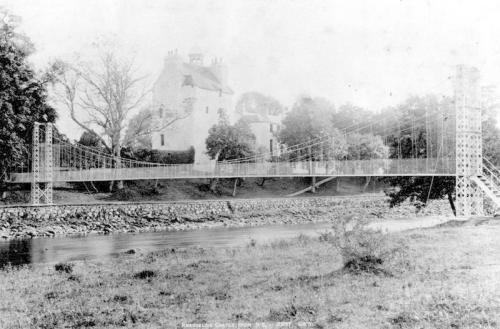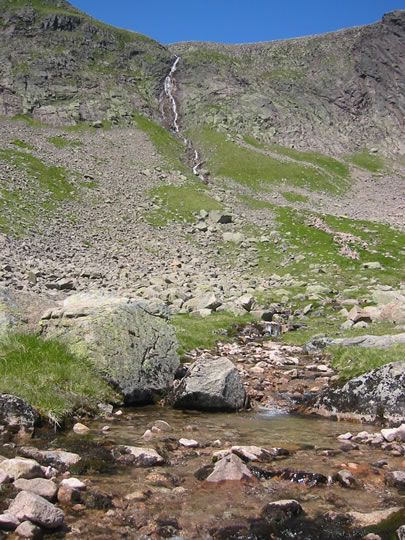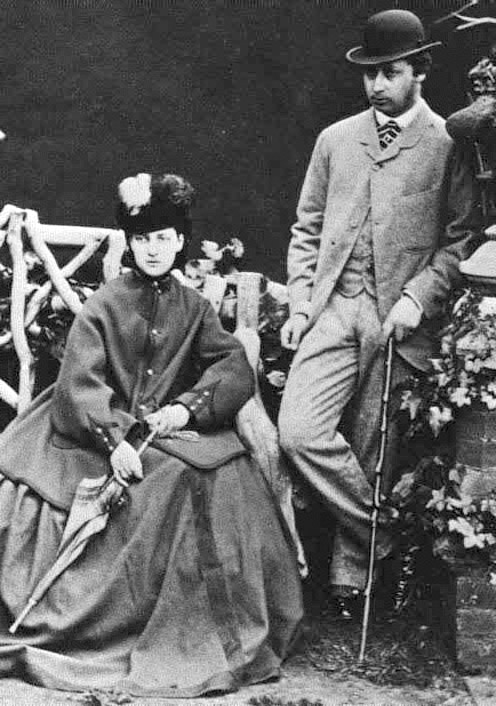|
Birkhall
Birkhall (from the Scots ''Birk Hauch'': "Birch River-meadow") is a estate on Royal Deeside, Aberdeenshire, Scotland, owned by King Charles III. It is located alongside the River Muick to the south-west of Ballater. History The property was built in 1715. It was acquired from the Gordon family (owners of the Abergeldie Estate) who had acquired it from the Farquharsone family. Birkhall was acquired by Prince Albert, consort to Queen Victoria, as part of the Balmoral Castle estate in 1849 and given to his eldest son, Albert Edward, Prince of Wales. Victoria bought Birkhall back to provide accommodation for her staff and extended family in 1884; Prince Albert Edward had only visited Birkhall once, as he preferred the larger Abergeldie Castle. Birkhall was occupied by General Sir Dighton Probyn, Keeper of the Privy Purse to King Edward VII and Comptroller to Queen Alexandra, in the late 19th century and early 20th century. A fine wire suspension bridge, erected in 1880 by ... [...More Info...] [...Related Items...] OR: [Wikipedia] [Google] [Baidu] |
Abergeldie Castle
Abergeldie Castle is a four-floor tower house in Crathie and Braemar parish, SW Aberdeenshire, Scotland. It stands at an altitude of , on the south bank of the River Dee, west of Ballater, and about east of the royal residence of Balmoral Castle. Behind it rises Creag nam Ban, a rounded granite hill about high, and across the river to its front is the cairn-crowned Geallaig Hill, rising to . It is protected as a category A listed building. The castle was the home of the Baron of Abergeldie. History The name derives from the Pictish language, and means the "Confluence of Geldie," a reference to its location near the confluence of River Geldie and River Dee. (Note: attempts have been made to derive the name from Scottish Gaelic, such as "inbhir-gile" shining confluence" but while aber and inbhir both mean "confluence" the former is derived from Pictish, a P-Celtic rythoniclanguage which once dominated in Britain, while the latter is derived from Gaelic, a Q-Celtic ... [...More Info...] [...Related Items...] OR: [Wikipedia] [Google] [Baidu] |
Balmoral Castle
Balmoral Castle () is a large estate house in Aberdeenshire, Scotland, and a residence of the British royal family. It is near the village of Crathie, west of Ballater and west of Aberdeen. The estate and its original castle were bought from the Farquharson family in 1852 by Prince Albert, the husband of Queen Victoria. Soon afterwards the house was found to be too small and the current Balmoral Castle was commissioned. The architect was William Smith of Aberdeen, and his designs were amended by Prince Albert. Balmoral remains the private property of the monarch and is not part of the Crown Estate. It was the summer residence of Queen Elizabeth II, who died there on 8 September 2022. The castle is an example of Scottish baronial architecture, and is classified by Historic Environment Scotland as a category A listed building. The new castle was completed in 1856 and the old castle demolished shortly thereafter. The Balmoral Estate has been added to by successive me ... [...More Info...] [...Related Items...] OR: [Wikipedia] [Google] [Baidu] |
Ballater
Ballater (, ) is a village in Aberdeenshire, Scotland, on the River Dee, immediately east of the Cairngorm Mountains. Situated at an elevation of , Ballater is a centre for hikers and known for its spring water, once said to cure scrofula. It is home to more than 1400 inhabitants and has had a long connection with the British royal family. History The medieval pattern of development along this reach of the River Dee was influenced by the ancient trackways across the Grampian Mounth, which determined strategic locations of castles and other Deeside settlements of the Middle Ages. In the early 14th century, the area was part of the estates of the Knights of St John, but the settlement did not develop until around 1770; first as a spa resort to accommodate visitors to the Pannanich Mineral Well, then later upon the arrival of the railway in 1866 it was visited by many tourists taking advantage of the easier access thus afforded. The Victoria and Albert Halls, opposite ... [...More Info...] [...Related Items...] OR: [Wikipedia] [Google] [Baidu] |
Princess Margaret, Countess Of Snowdon
Princess Margaret, Countess of Snowdon (Margaret Rose; 21 August 1930 – 9 February 2002) was the younger daughter of King George VI and Queen Elizabeth The Queen Mother. She was the younger sister and only sibling of Queen Elizabeth II. Margaret was born when her parents were the Duke and Duchess of York, and she spent much of her childhood with them and her elder sister. Her life changed at the age of six, when her father succeeded to the British throne following Abdication of Edward VIII, the abdication of his brother Edward VIII. Margaret's sister became heir presumptive, with Margaret second in line to the throne. Her position in the line of succession diminished over the following decades as Elizabeth's children and grandchildren were born. During the Second World War, the two sisters stayed at Windsor Castle despite suggestions to evacuate them to Canada. During the war years, Margaret was too young to perform official duties and continued her education, being nin ... [...More Info...] [...Related Items...] OR: [Wikipedia] [Google] [Baidu] |
Royal Deeside
The River Dee () is a river in Aberdeenshire, Scotland. It source (river), rises in the Cairngorms and flows through southern Aberdeenshire to reach the North Sea at Aberdeen. The area it passes through is known as Deeside, or Royal Deeside in the region between Braemar and Banchory because Queen Victoria came for a visit there in 1848 and greatly enjoyed herself. She and her husband, Prince Albert, built Balmoral Castle there which replaced an older castle. Deeside is a popular area for tourists, due to the combination of its scenery and historic royal associations. It is part of the Cairngorms National Park, and the Deeside and Lochnagar national scenic area (Scotland), National Scenic Area. The Dee is popular with angling, anglers and is one of the most famous Atlantic salmon, salmon fishing rivers in the world. The Statistical Accounts of Scotland, New Statistical Account of Scotland attributed the name Dee as having been used as early as the second century AD in the work o ... [...More Info...] [...Related Items...] OR: [Wikipedia] [Google] [Baidu] |
Louis Harper
Louis Harper (23 April 1868 – 26 January 1940) was a civil engineer from the north-east of Scotland who designed a number of suspension bridge, suspension footbridges towards the end of the 19th century. Harper was born in Aberdeen, Aberdeenshire, to John Harper and Margaret Ross. His father came from Turriff in Aberdeenshire, and worked as a fencer in Edinburgh and Glasgow before starting the family firm in Aberdeen in 1856, which became Harpers Ltd in 1885. John Harper patented a mechanism for straining wire, used both to make fences and later also for the Wire rope, cables of bridges. His son John took charge of the business until 1887, while his second son Louis served an apprenticeship with Jenkins & Mar, Civil Engineers. Louis set up his own firm in 1889, later collaborating with the contractors James Abernethy & Co. In addition to his bridge projects, he assisted Aberdeen Council in surveying their town water scheme. He became an Associate Member of the Institution of ... [...More Info...] [...Related Items...] OR: [Wikipedia] [Google] [Baidu] |
Edward VII
Edward VII (Albert Edward; 9 November 1841 – 6 May 1910) was King of the United Kingdom and the British Dominions, and Emperor of India, from 22 January 1901 until Death and state funeral of Edward VII, his death in 1910. The second child and eldest son of Queen Victoria and Prince Albert of Saxe-Coburg and Gotha, Edward, nicknamed "Bertie", was related to royalty throughout Europe. He was Prince of Wales and heir apparent to the British throne for almost 60 years. During his mother's reign, he was largely excluded from political influence and came to personify the fashionable, leisured elite. He Wedding of Prince Albert Edward and Princess Alexandra, married Princess Alexandra of Denmark in 1863, and the couple had six children. As Prince of Wales, Edward travelled throughout Britain performing ceremonial public duties and represented Britain on visits abroad. His tours of North America in 1860 and of the Indian subcontinent in 1875 proved popular successes. Despite the ap ... [...More Info...] [...Related Items...] OR: [Wikipedia] [Google] [Baidu] |
Queen Alexandra
Alexandra of Denmark (Alexandra Caroline Marie Charlotte Louise Julia; 1 December 1844 – 20 November 1925) was List of British royal consorts, queen-consort of the United Kingdom and the British Dominions, and Empress of India, from 22 January 1901 to 6 May 1910 as the wife of Edward VII. Alexandra's family had been relatively obscure until 1852, when her father, Christian IX of Denmark, Prince Christian of Schleswig-Holstein-Sonderburg-Glücksburg, was chosen with the consent of the major European powers to succeed his second cousin Frederick VII of Denmark, Frederick VII as King of Denmark. At the age of sixteen, Alexandra was chosen as the future wife of Albert Edward, Prince of Wales, the son and heir apparent of Queen Victoria. Wedding of Prince Albert Edward and Princess Alexandra, The couple married eighteen months later in 1863, the year in which her father became king of Denmark as Christian IX and her brother William was appointed king of Greece as George I of G ... [...More Info...] [...Related Items...] OR: [Wikipedia] [Google] [Baidu] |
Suspension Bridge
A suspension bridge is a type of bridge in which the deck (bridge), deck is hung below suspension wire rope, cables on vertical suspenders. The first modern examples of this type of bridge were built in the early 1800s. Simple suspension bridges, which lack vertical suspenders, have a long history in many mountainous parts of the world. Besides the bridge type most commonly called suspension bridges, covered in this article, there are other types of suspension bridges. The type covered here has cables suspended between towers, with vertical ''suspender cables'' that transfer the Structural load#Live load, imposed loads, transient load, live and Structural load#Dead load, dead loads of the deck below, upon which traffic crosses. This arrangement allows the deck to be level or to arc upward for additional clearance. Like other suspension bridge types, this type often is constructed without the use of falsework. The suspension cables must be anchored at each end of the bridge, s ... [...More Info...] [...Related Items...] OR: [Wikipedia] [Google] [Baidu] |
George V
George V (George Frederick Ernest Albert; 3 June 1865 – 20 January 1936) was King of the United Kingdom and the British Dominions, and Emperor of India, from 6 May 1910 until Death and state funeral of George V, his death in 1936. George was born during the reign of his paternal grandmother, Queen Victoria, as the second son of the Prince and Princess of Wales (later King Edward VII and Queen Alexandra). He was third in the line of succession to the British throne behind his father and his elder brother, Prince Albert Victor. From 1877 to 1892, George served in the Royal Navy, until his elder brother's unexpected death in January 1892 put him directly in line for the throne. The next year Wedding of Prince George and Princess Victoria Mary, George married his brother's former fiancée, Princess Victoria Mary of Teck, and they had six children. When Death of Queen Victoria, Queen Victoria died in 1901, George's father ascended the throne as Edward VII, and George was created ... [...More Info...] [...Related Items...] OR: [Wikipedia] [Google] [Baidu] |
Dighton Probyn
General (United Kingdom), General Sir Dighton Macnaghten Probyn, (21 January 1833 – 20 June 1924) was a British Army officer and an English recipient of the Victoria Cross, the highest award for gallantry in the face of the enemy that can be awarded to British and Commonwealth of Nations, Commonwealth forces. Early career The son of Captain George Probyn and Alicia Workman, daughter of Sir Francis Workman Macnaghten, 1st Baronet, Dighton Probyn entered the light cavalry arm of the East India Company's Bengal Army as a Cornet (military rank), cornet in 1849, being posted into the 6th Light Cavalry. In 1852, he was appointed adjutant of the newly raised 2nd Punjab Cavalry which formed part of the 11,000 strong Punjab Irregular Force responsible for policing the Trans-Indus Frontier. At the time of the outbreak of the Indian Rebellion of 1857, on 10 May 1857, Dighton Probyn was at Jullundur, the station of the 6th Bengal Light Cavalry. Probyn's squadron of the 2nd Punjab Cavalr ... [...More Info...] [...Related Items...] OR: [Wikipedia] [Google] [Baidu] |









